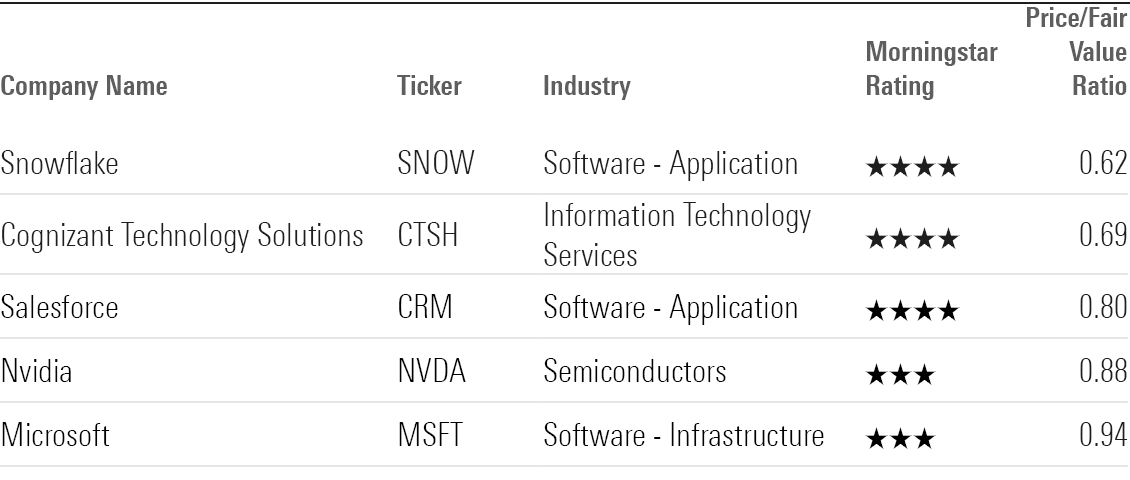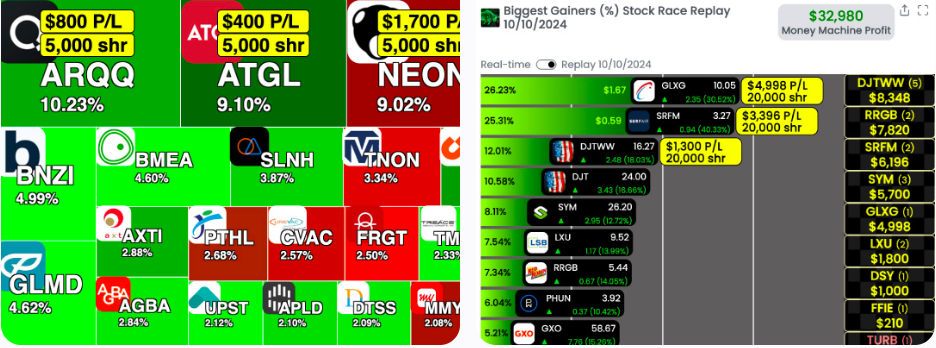20 Handy Tips For Deciding On AI Stock Analysis Sites
20 Handy Tips For Deciding On AI Stock Analysis Sites
Blog Article
Top 10 Tips For Evaluating The Security And Privacy Of Ai Stock Predicting/Analyzing Trading Platforms
Since they handle sensitive personal and financial data, security and privacy are crucial when utilizing AI trading platforms that predict/analyze price of stocks. Data breaches or mishandling can result in significant financial losses, as well as reputational damage. These are the top ten tips to help you evaluate the privacy and security capabilities of these platforms.
1. Examine the encryption of data
Security on the move: Ensure whether the application you're using is secure and uses protocols to protect your data while it is transmitted between their servers and the device (e.g. TLS/SSL).
Secure transport of data Verify that the sensitive data stored on the server of the platform has been secured with a strong encryption standard, such as AES-256.
Verify if the platform supports end-toend encryption of sensitive data or communications.
2. Assess the authentication mechanisms
Two-factor authentication (copyright) Make sure that the platform supports copyright to provide an additional layer of security.
Verify biometric authentication.
Password policies. Check if the platform enforces policies on passwords that are secure (e.g., length minimum or complexity requirements).
3. Examine for Compliance
Financial regulations: Make sure the platform is compliant with pertinent financial laws (e.g., SEC, FINRA, MiFID II).
Law on data protection: If your business is with an area that is legally governed by these laws, ensure the compliance.
Audit certifications: Determine if the platform has undergone audits of security by third parties or has certificates (e.g., SOC 2, ISO 27001).
Review Controls for Accessing Data
Role-based access: Ensure that the platform uses role-based access controls (RBAC) to limit data access to authorized users.
Verify that you have the ability to create permissions with granular levels for various team members.
Activity monitoring Check to see whether your platform is monitoring and tracking the user's activity.
5. Assess the Management of Vulnerability
Regular updates: Ensure that your platform is updated with software on a regular basis to fix any weaknesses.
Check that the platform is regularly subjected to penetration tests in order to detect security flaws and then fix the vulnerabilities.
Programs for bug bounty: Check whether there is a bug bounty program available on the platform to encourage security researchers from outside to share vulnerabilities.
6. Evaluate Data Privacy Policies
Transparency. Check out the Privacy Policy to learn the nature of data being collected and how it is used.
Data minimization: Ensure the platform only collects the information necessary for its functionality.
Third-party sharing : Review the platform's data sharing policies and terms.
7. Secure API usage is detected
API security. Ensure APIs use secure authentication techniques (e.g. OAuth keys, API keys), and that data is secured.
Rate limiting. Verify the API's rate limitation to prevent abuse.
Check whether the platform records API access to monitor or auditing purposes, and for reporting.
8. Assess the recovery of an incident and respond
Incident response plan - Ensure that your platform is armed with a procedure for dealing with data breaches and other security incidents.
Review the platform's policies for notification.
Backups of data: Determine if the platform regularly backs up the data it stores and has a disaster recovery plan in place.
9. Evaluation of Physical Security Measures
Data center safety: Verify that the servers of the platform are located in secure data centers that have physical security measures (e.g. monitoring access control, monitoring).
Redundancy: Determine if there are redundant platforms on the platform to ensure that the data is available in the event of a hardware failure.
Geographic distribution: Check if data is distributed over multiple geographical locations to ensure greater protection.
10. Test user privacy controls
Data deletion: Ensure the platform will allow you to erase your personal data for good if you stop using the service.
Privacy settings - Examine to determine if the platform permits users to set privacy settings in order for you control which data will be visible or shared.
Make sure that you have an anonymization feature. This is crucial if you are using the platform to perform analytics or machine-learning.
Bonus Tips
Feedback from users and reputation Read user reviews and feedback to assess the credibility of the platform's security and privacy.
Trial period: Try an unpaid trial or demo to try out the security features and privacy controls.
Customer Support: Be sure that the platform has robust assistance for any questions or concerns relating to security.
With these suggestions, you can effectively assess the security and privacy of AI trading platforms that predict or analyze stocks, ensuring your data and financial information are protected. A secure platform safeguards your investments and creates confidence in its services. Follow the best stock ai recommendations for site tips including best ai for trading, AI stock market, incite, ai for investment, incite, best ai for trading, incite, investing ai, stock ai, investment ai and more.
Top 10 Tips To Assess The Risk Management Capabilities Of Ai Stock Prediction/Analyzing Platforms
Any AI trading platform that predicts or analyzes stocks has to have risk management in place that is crucial to protecting your capital and limiting losses. A platform with robust risk management tools can assist you in navigating market volatility and make well-informed decisions. Here are the top ten tips for assessing the risks management capabilities of these platforms:
1. Evaluate Stop-Loss and Take-Profit Features
Levels that can be customized - Make sure that the platform allows you customize your stop-loss, take-profit and profit level for every trade or strategy.
Make sure the platform is able to allow for trailing stops. They automatically adjust themselves as markets shift in your direction.
If the platform offers stop-loss order guarantees that your trade is closed at the specified price in volatile markets You can be assured of a successful trade.
2. Measure Positions Tools
Fixed amount - Ensure you know the amount of your positions in relation to a set amount.
Percentage of your portfolio: See if you can set the size of your positions as a percentage of your overall portfolio to control risk in a proportional manner.
Risk-reward ratio: Determine if the platform supports setting risk-reward ratios on individual trades or strategies.
3. Make sure you are using Diversification Aid
Multi-asset trading: Ensure the platform supports trading across different types of assets (e.g. ETFs, stocks, options and forex) to help diversify your portfolio.
Sector allocation check to determine if there are tools available for managing and monitoring sector exposure.
Geographic diversification. Check if the platform is able to trade on international markets and spread geographic risks.
4. Assess margin and leverage control
Margin requirements: Ensure that the platform clearly discloses margin requirements for leveraged trading.
Check to see whether you are able to set limit on leverage to limit risk exposure.
Margin call - Check to see if your service informs you about margin calls in a timely manner. This will help prevent liquidation.
5. Assess Risk Analytics Reporting
Risk metrics. Make sure that your platform is equipped with the most important risk indicators (e.g. VaR Sharpe Ratio, Drawdown) relevant to the portfolio you are managing.
Evaluation of scenarios: Ensure that the platform you're using lets you simulate market scenarios and evaluate the risks.
Performance reports - Check that the platform provides specific performance reports, including risk adjusted returns.
6. Check for Real-Time Risk Monitoring
Monitoring of portfolios - Make sure that the platform you choose provides real-time monitoring so that your portfolio is secure.
Alerts and notifications. Ensure that the platform has sent out alerts at the moment that risk events occur (e.g. Margin breaches and triggers for stop-loss orders).
Risk dashboards: See if the platform offers customizable risk dashboards for an in-depth view of your risk profile.
7. How can you assess Stress Testing & Backtesting
Test for stress: Ensure that the platform will allow you to stress-test your strategies or portfolios during extreme market conditions.
Backtesting. Check whether the platform supports backtesting, which is the application of historical data to assess the level of risk and performance.
Monte Carlo simulations: Verify that the platform is using Monte Carlo simulations to model a range of possible outcomes and assess risks.
8. Risk Management Regulations - Assess the Compliance
Check for regulatory compliance: Verify that the platform's compliance with the applicable Risk Management Regulations (e.g. MiFID II for Europe, Reg T for the U.S.).
Best execution: Check if the platform is in line with best execution practices, ensuring trades are executed at the highest available price to minimize the chance of slippage.
Transparency - See whether the platform has disclosed risks in a clear, transparent manner.
9. Examine for Risk Parameters that are User Controlled
Custom risk rules: Make sure that the platform permits you to create custom risk management guidelines (e.g., the maximum daily loss, or maximum size of position).
Automated controls for risk: Check to see whether your platform is able to apply risk management rules upon the parameters you've established.
Make sure the platform supports manual overrides to automated risk control.
Review user feedback and case studies
User feedback: Read user reviews to assess the platform's capability to manage risk.
Case studies: Seek out examples or testimonials that demonstrate the capabilities of the platform for managing risk.
Community forums: See whether the platform hosts an active user community where traders can share tips for managing risk and strategies.
Bonus Tips
Free Trial: Try out the platform's features to manage risk in real situations.
Support for customers: Ensure that your platform has a robust support for any queries or concerns related to the management of risk.
Educational resources - Check to see if the platform has instructional resources and videos on risk management best practice.
With these suggestions, you can effectively assess the potential risk managing capabilities of AI stock predicting/analyzing trading platforms Be sure to select one that will to protect your capital and limit the possibility of losses. To ensure that your trading is successful and manage volatile markets, strong risk management tools are essential. View the recommended chart analysis ai for site examples including trading ai tool, AI stock analysis, stock predictor, best ai penny stocks, ai share trading, ai options, best AI stocks to buy now, free AI stock picker, chart analysis ai, AI stock trader and more.